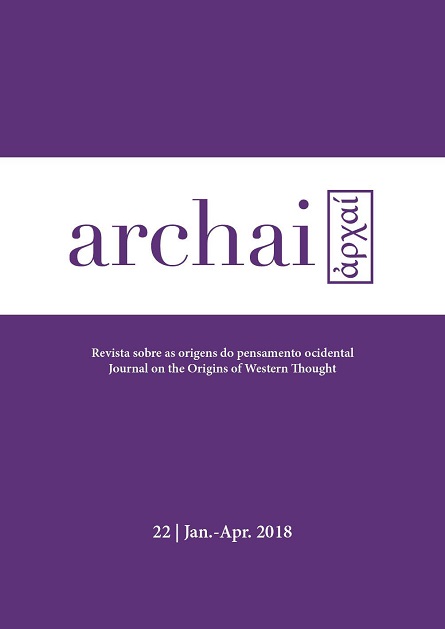Commilito et Vir Militaris:
Aspectos bélicos da exaltação do Imperador Romano em Plínio, o Jovem
DOI:
https://doi.org/10.14195/1984-249X_22_4Keywords:
Estoicismo, idealização, principado, tradição, virtudesAbstract
Durante a época do principado a imagem do césar buscava afirmar-se por meio de modelos tradicionalmente valorizados pela sociedade romana. Nos primeiro anos do século II d. C., quando o império atingiu sua máxima extenção graças à s recente conquistas do então imperador Trajano, os aspectos guerreiros serviram como importante fator de amparo à figura desse governante. Nesse contexto, o discurso de Plínio, o Jovem, intitulado Panegírico de Trajano destaca os feitos e a postura militar do governante. Com base em uma bibliografia que aponta a importância de ideia morais e políticas fundadas nos valores ancestrais, bem como o papel da filosofia estoica na construção da imagem do príncipe ideal, este artigo pretende apontar alguns aspectos de nossa análise do discurso pliniano. Nele, foi fundamental o elogio das virtudes marciais de Trajano a partir do respaldo fornecido pelas noções de virtus e mos maiorum. Solidamente ligadas à tradição romana, essas ideias presentes na obra em tela visavam fornecer uma imagem de equilíbrio entre os aspectos autocráticos e militares do governante e os anseios da ordem senatorial, que buscava amnter vivas as instituições republicanas sob o sistema do principado.
Downloads
Downloads
Published
How to Cite
Issue
Section
License
Given the public access policy of the journal, the use of the published texts is free, with the obligation of recognizing the original authorship and the first publication in this journal. The authors of the published contributions are entirely and exclusively responsible for their contents.
1. The authors authorize the publication of the article in this journal.
2. The authors guarantee that the contribution is original, and take full responsibility for its content in case of impugnation by third parties.
3. The authors guarantee that the contribution is not under evaluation in another journal.
4. The authors keep the copyright and convey to the journal the right of first publication, the work being licensed under a Creative Commons Attribution License-BY.
5. The authors are allowed and stimulated to publicize and distribute their work on-line after the publication in the journal.
6. The authors of the approved works authorize the journal to distribute their content, after publication, for reproduction in content indexes, virtual libraries and similars.
7. The editors reserve the right to make adjustments to the text and to adequate the article to the editorial rules of the journal.



